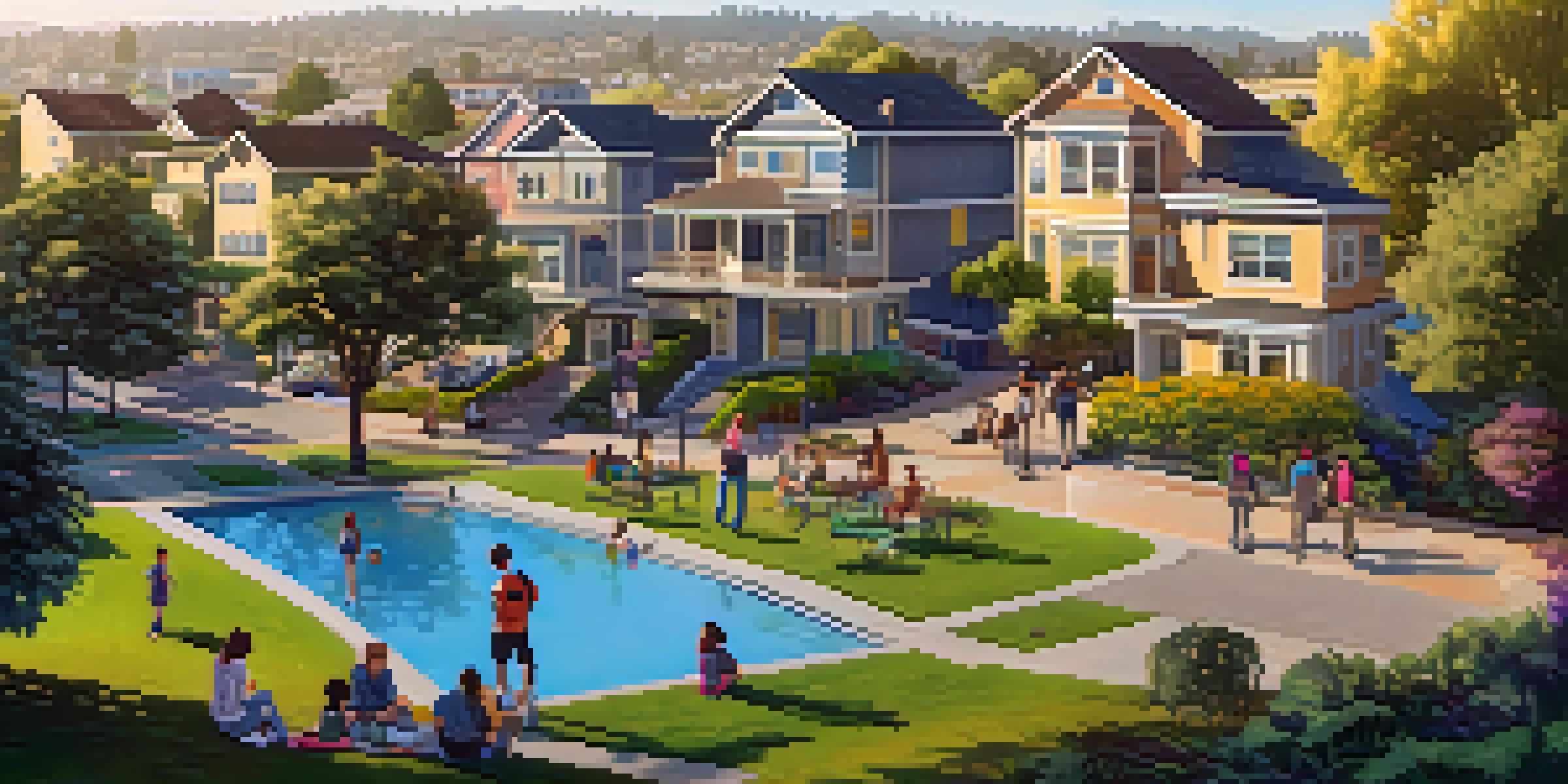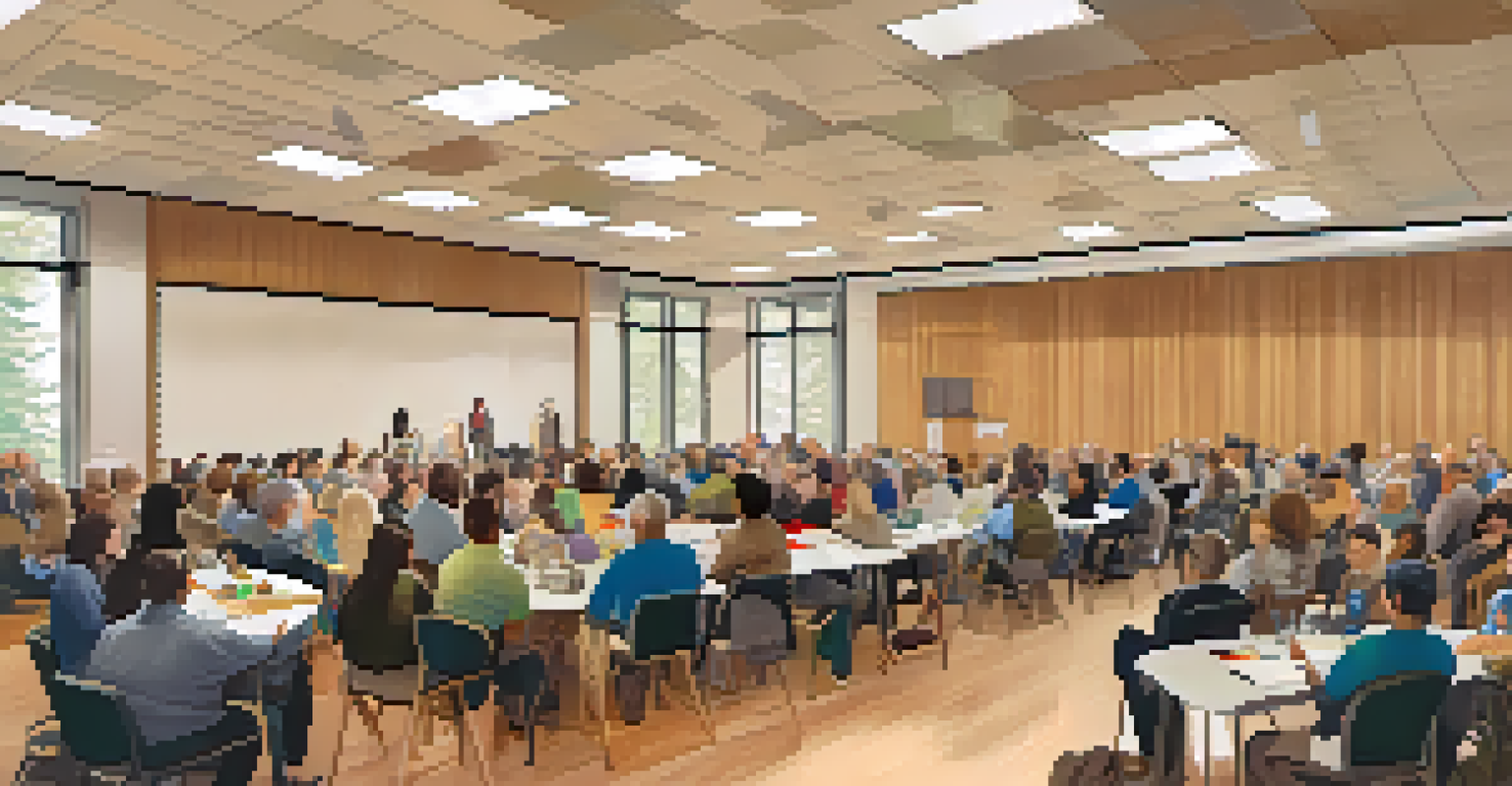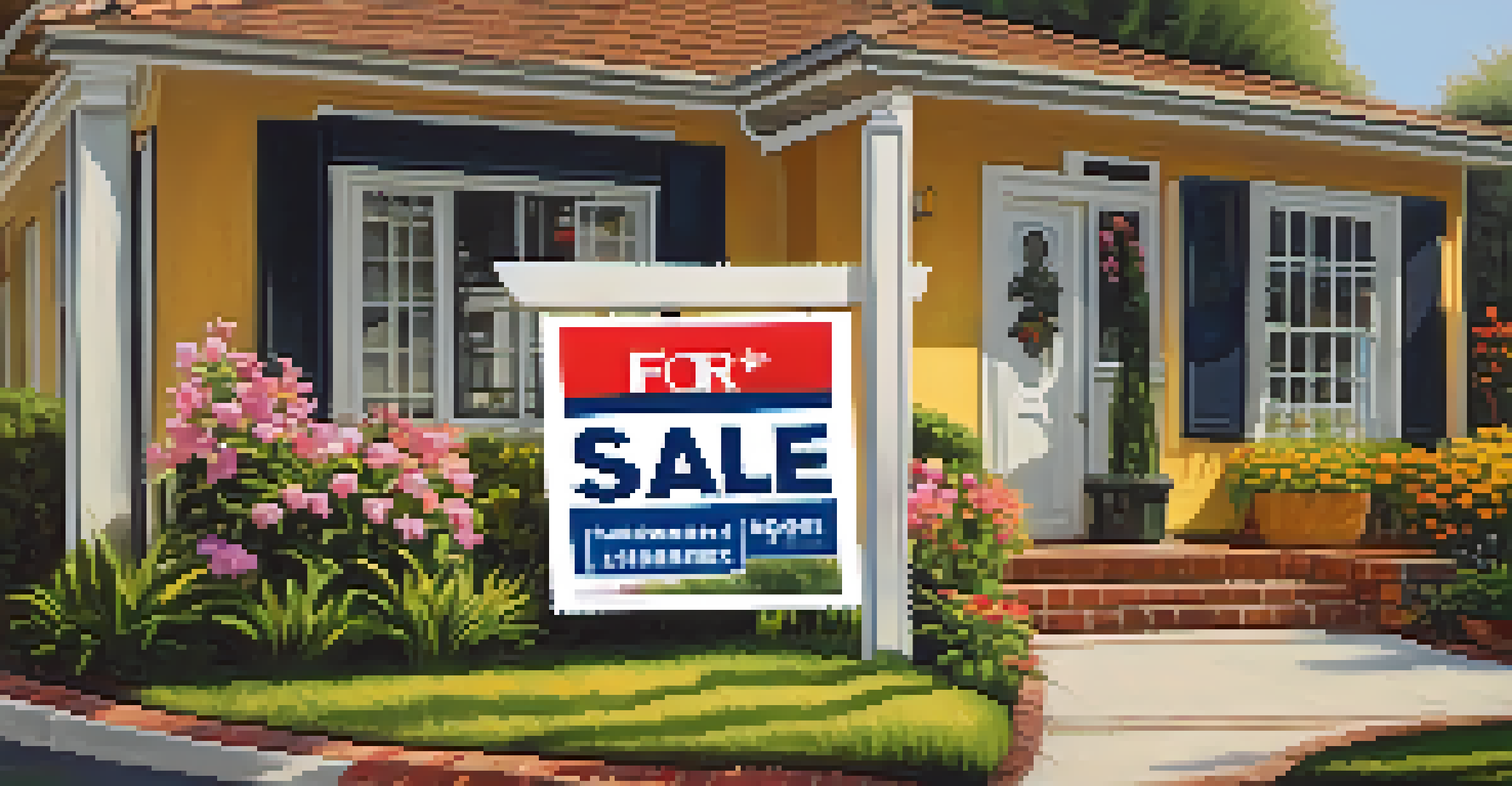Housing Affordability Trends in Redwood City Over Time

Introduction to Housing Affordability in Redwood City
Housing affordability has become a hot topic in many urban areas, and Redwood City is no exception. Nestled in the heart of Silicon Valley, it has seen significant changes in real estate dynamics over the years. Understanding these trends is essential for both current residents and potential buyers, as they impact lifestyle choices and community growth.
Affordable housing is not a privilege, but a right that every individual deserves.
In recent years, the demand for housing in Redwood City has surged, driven by its proximity to tech hubs and a vibrant community. This influx has led to rising home prices, prompting concerns about affordability. For many families and individuals, the question remains: can they afford to call Redwood City home?
This article will delve into the historical trends of housing affordability in Redwood City, exploring key factors that have influenced the market. By examining past data and current conditions, we hope to shed light on what the future may hold for potential homeowners.
Historical Housing Prices in Redwood City
To understand present affordability, we must first look back at historical housing prices in Redwood City. In the early 2000s, the market was relatively stable, with modest price increases. However, as tech companies flourished, the demand for real estate began to outpace supply, leading to a steep rise in housing prices.

For instance, the median home price in Redwood City was around $600,000 in 2000. Fast forward to 2020, and that figure soared to nearly $1.5 million. This dramatic shift not only reflects the area’s desirability but also highlights the growing challenges for those seeking affordable housing.
Rising Housing Prices Challenge Affordability
Redwood City has experienced a dramatic increase in median home prices, from around $600,000 in 2000 to approximately $1.6 million in 2023, complicating affordability for many residents.
Understanding these historical trends provides critical context for today’s market. As we analyze the data, it becomes clear that the dynamics of housing affordability are deeply intertwined with economic factors and demographic shifts.
Factors Influencing Housing Affordability
Several factors play a crucial role in determining housing affordability in Redwood City. One of the most significant is the balance between supply and demand. As more people flock to the area for job opportunities, the demand for housing continues to rise, often outstripping available inventory.
The best way to predict the future is to create it.
Additionally, local zoning laws and regulations can either facilitate or hinder new construction. Restrictions on building heights or density can limit the number of homes being developed, further exacerbating the affordability crisis. This regulatory environment often becomes a topic of debate among residents and policymakers.
Lastly, economic trends, such as interest rates and employment rates, also significantly affect housing affordability. Low-interest rates may encourage home buying, but if prices remain high, many are still priced out of the market.
Demographic Changes and Their Impact
Demographic shifts have also influenced housing affordability in Redwood City. The area attracts a diverse population, including young professionals, families, and retirees, all vying for a limited number of homes. This growing diversity brings unique housing needs, complicating the affordability landscape.
For example, younger buyers may prefer smaller, more affordable units close to amenities, while families may seek larger homes in good school districts. This competition for different types of housing can drive up prices across the board, making it challenging for any one group to find affordable options.
Supply and Demand Drive Housing Market
The imbalance between the growing demand for housing and limited supply, influenced by local zoning laws and regulations, continues to exacerbate the affordability crisis in Redwood City.
Furthermore, as remote work becomes more prevalent, some residents may seek larger homes with office spaces, further increasing demand. This shift in lifestyle preferences will likely continue to shape the housing market in Redwood City.
Current Housing Affordability Statistics
As of 2023, housing affordability in Redwood City remains a pressing issue. According to recent reports, the median home price is approximately $1.6 million, while the average income for residents is around $130,000. This disparity indicates that many residents are spending a significant portion of their income on housing.
Experts suggest that a household should ideally spend no more than 30% of its income on housing costs. In Redwood City, however, many families find themselves exceeding this benchmark, leading to financial strain and difficult choices. This situation underscores the need for more affordable housing options in the area.
Moreover, rental prices have also increased, with the average rent for a two-bedroom apartment hovering around $3,500. For many, this reality emphasizes the importance of exploring alternative housing solutions and advocating for policy changes.
Community Initiatives Addressing Affordability
In response to the housing affordability crisis, various community initiatives have emerged in Redwood City. Local government and nonprofit organizations are actively working to create more affordable housing options through development projects and policy reforms. These initiatives aim to support low and moderate-income families in finding suitable housing.
One notable example is the push for affordable housing developments that offer lower-income residents access to quality homes. By collaborating with developers and utilizing public land, the city can increase the availability of affordable units and help alleviate some of the pressure on the housing market.
Community Initiatives for Affordable Housing
Local government and nonprofit organizations are implementing initiatives to create more affordable housing options, emphasizing the importance of community engagement in shaping future solutions.
Additionally, community engagement plays a vital role in these efforts. Residents are encouraged to participate in discussions about housing policies, ensuring that their voices are heard in shaping the future of their community. This collaborative approach is essential for creating sustainable solutions.
The Future of Housing Affordability in Redwood City
Looking ahead, the future of housing affordability in Redwood City remains uncertain but hopeful. As the city continues to attract new residents, finding a balance between growth and affordability will be crucial. By prioritizing smart development and sustainable practices, Redwood City can work towards a more inclusive housing market.
Moreover, ongoing discussions about zoning reforms and housing policies can pave the way for innovative solutions. For instance, encouraging mixed-use developments or increasing density in certain areas may help alleviate some of the housing pressures faced by residents.

Ultimately, the key to addressing housing affordability lies in collaboration among stakeholders, including local government, developers, and the community. Together, they can create a future where everyone has access to a place they can call home.